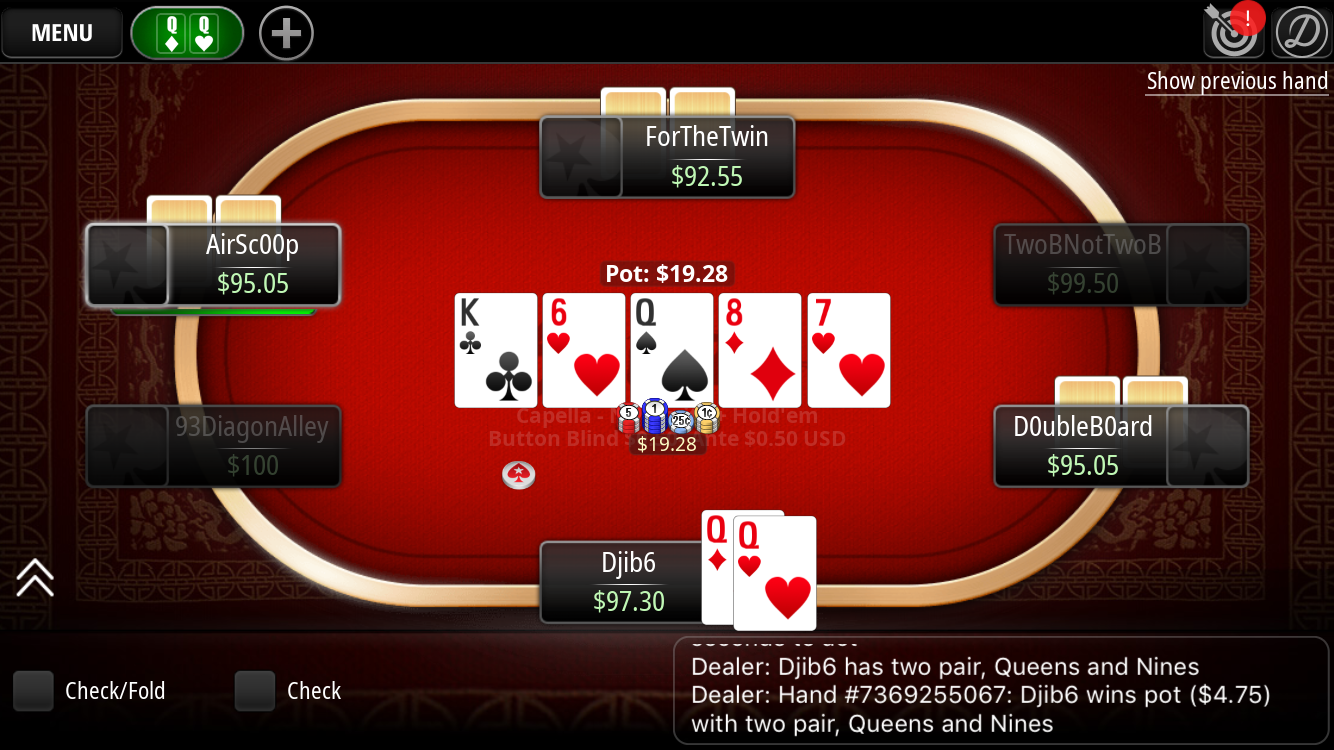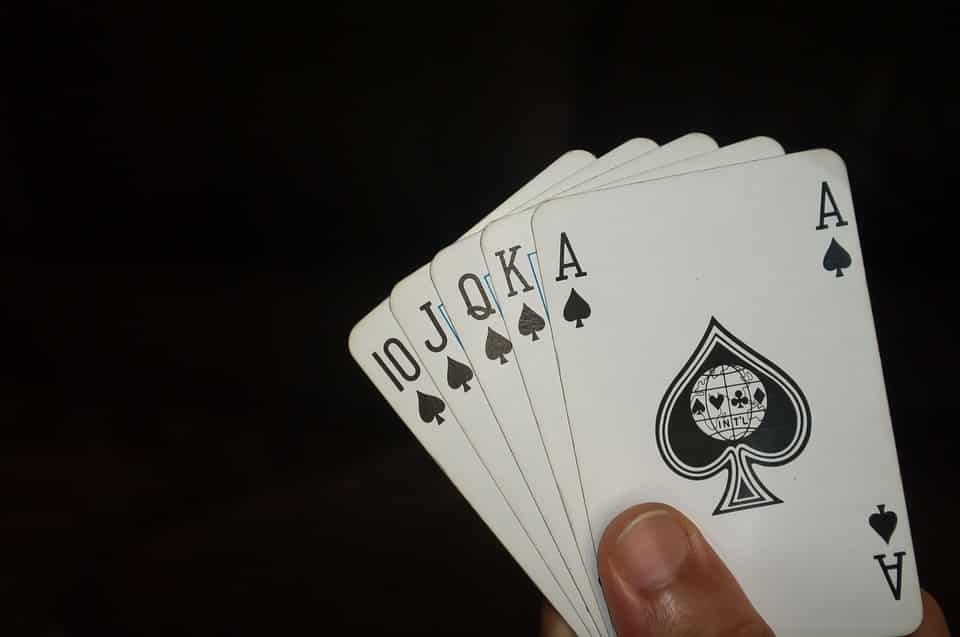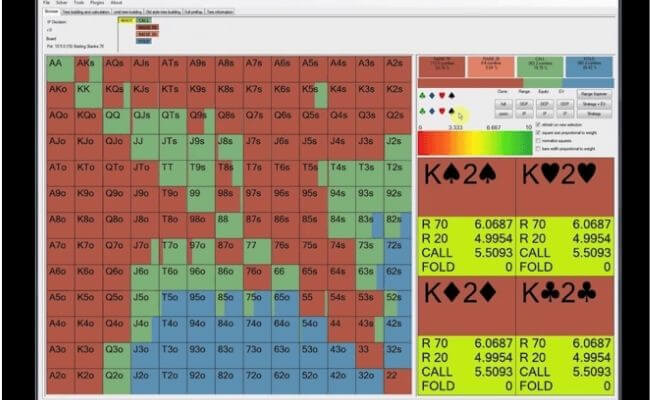- Mid Stakes Poker Tournament Strategy
- Mid Stakes Poker Strategy Games
- Mid Stakes Poker Strategy Odds
- Mid Stakes Poker Strategy Tactics
- Mid Stakes Poker Strategy Rules
The Upswing Poker Lab is a poker training course taught by Doug Polk, Ryan Fee, and other top poker pros. The Lab is updated regularly with in-depth learning modules, theory videos, and a wealth of information to make you a better poker player.
By Ernie Gorham
One of the best ways to get better at poker and win more money is to watch what the best players are doing and try to figure out why.
That is what we will do here today, so keep reading to get a glimpse inside the head of one of the best, Doug Polk.
Hand 1: Giving Up and Winning Anyway
In this session recorded for members of the Upswing Lab training course, Doug plays $3-$6 and explains his thoughts as he plays. The first hand starts with the cutoff open-limping and the button raising to 4.5 big blinds (BBs). Doug is next to act with A 5 in the small blind and re-raises to 11 BBs.
Micro stakes poker takes a few different skills and attributes if you want to be successful. First, you will need to have an ample bankroll. While the variance is not going to be nearly as dramatic in these games as it is in small stakes or higher games, you will run into the occasional 10+ buy-in swing. Studying for Mid-Stakes players. You learned the basics. You have a good idea of which hands you can play from each position, the standard betting sizes on each situation, and how to value-bet versus bad players, etc. Now you want to move up and try to beat the mid-stakes, but things are not working as they used to at the low-stakes. Combining the best general knowledge about microstakes poker strategy, in-depth concepts from BlackRain's groundbreaking book, Crushing the Microstakes, and an ongoing Q&A/hand analysis this is the ideal tool to learn how to beat poker's lowest levels. By Nathan Williams. Beating poker’s micro-stakes starts with rock-solid strategy before the. Mid Stack Poker Strategy There is a reason we use the auto-rebuy feature. Correct strategy changes significantly depending on the amount of starting chips we have for our hand. Most of us have invested our time learning correct strategies for 100bb poker. Beating poker’s micro-stakes starts with rock-solid strategy before the flop. Playing the right hands before the flop will result in much easier decisions on later streets. How to Win at Microstakes Poker Before we start with the pre-flop guidelines it’s important to consider exactly what our objectives are and how we can achieve them.

There are a few reasons for this raise:
- The button player is likely opening a wide range of hands here, particularly after the cutoff open limps indicating they are a weaker player. This means the button will have to fold a lot of their weaker holdings to the reraise. These weak holdings still have equity against us, and when they fold preflop they instantly surrender that equity. That is a huge win, especially out of position.
- Even when Doug does get called, A-5 suited has good equity versus villain’s calling range. It will even be ahead of some hands. For example, A-5 suited is a 57-43 equity favorite vs K-Q suited.
- The fact that Doug has an Ace makes it less likely that villain has some of his strongest holdings, like A-A and A-K. Doug having an ace makes it half as likely that villain has pocket aces.
Note: This is an example of a fairly advanced poker concept called blockers, which is covered in-depth in one of the lessons inside the Upswing Lab training course. Joining gets you access to the blocker lesson along with 245 hours of coaching videos and 259 preflop charts. Click here to learn more!
Both the cutoff and the button call the raise, making the pot 33 BBs. The flop comes K J 3 and Doug elects to check.
You could make a case for continuation betting here due to our range advantage (i.e. we can have A-A, A-K, K-K and J-J here while the other players shouldn’t). However, there are other hands in our range that are better candidates to bluff.
When bluffing, you generally want to pick hands that have a chance to improve on later streets. Some better options include:
- A-5 suited: While it may not seem like much, having a backdoor flush draw increases your equity significantly and gives you a lot more favorable turn cards.
- Q-10 suited: Having an open-ended straight draw gives you eight outs to the nuts.
- A-3 suited: While bottom pair does have some showdown value, betting could get better hands to fold like fours through tens or possibly even a pair of jacks. You also have five outs to improve to two pair.
Additionally, our bluffing frequency is tied to our value bet frequency, and we don’t have that many value bets on this board. This means we don’t need too many bluffs here.
Both players do check behind and the turn is the 10. Doug decides to bet 11.5 BBs.
This hand makes a much better bluff candidate on the turn because:
- Both players have showed weakness by checking behind on the flop.
- We have a gutshot and blocker to the nuts.
Both players fold and Doug wins a sizable pot with no pair!
Now, on to the second hand.

Hand 2: Flopping the Nut Flush Draw in Position
The hijack opens to three BBs and Doug calls on the button with A 8. Both blinds fold.
Usually we prefer three-betting over cold-calling because it allows us the opportunity to win the pot preflop. However, cold-calling also has some merit because:
Mid Stakes Poker Tournament Strategy
- We will have position the entire hand and thus we will over-realize our equity.
- It gives weaker players and hands a chance to enter the pot from the blinds. This is especially good when we hold suited aces because it increases the likelihood of a flush over flush situation.
- It allows us to play a wider range of hands than if we used a three-bet or fold strategy.

This time both of the blinds fold and Doug sees a flop of 5 4 4. The hijack player bets six BBs into a pot of six BBs. Doug elects to call.
Mid Stakes Poker Strategy Games
While it may be tempting to raise with the nut flush draw here you need to remember a couple of things:
- We only bluff to balance out the times we have value hands. On this board we have few value hands so we need very few bluffs.
- When choosing flush draws with which to bluff-raise with it is usually better to use the lower draws with less showdown value. You can learn more flush draw tactics by downloading this free guide.
The turn is the Q and villain bets 10 BBs into a pot of 19 BBs. Again Doug chooses to call because:
Mid Stakes Poker Strategy Odds
- If he raises and gets jammed on he may have to fold, giving up all the equity he has with his flush draw.
- He still has some showdown value. If his opponent is bluffing with worse than Ace high Doug can still win unimproved.
- He is in position. This guarantees Doug will get to value bet or raise when he does make his flush.
Mid Stakes Poker Strategy Tactics
The river is the 4 and villain checks. Again Doug checks behind, as he really can’t represent too many hands for value and like on the turn still has some showdown value.
Unfortunately this time Villain had pocket queens, but you can see that Doug lost the minimum with the line he took.
Sign up for the Upswing Poker Lab today for step-by-step instructions and examples to master both the fundamental theories and situational exploits to greatly increase your skill and earnings.